As the winter chill descends upon the UK – or, more accurately, as the rain pours and the mud churns – a majestic migrant arrives in our landscapes. British waterways, from wild wetlands to urban lochs, are graced with this elegant visitor. Its soft trumpeting calls intermingled with the usual quacks and honks. A suitably enchanting species for any winter wonderland – the whooper swan.
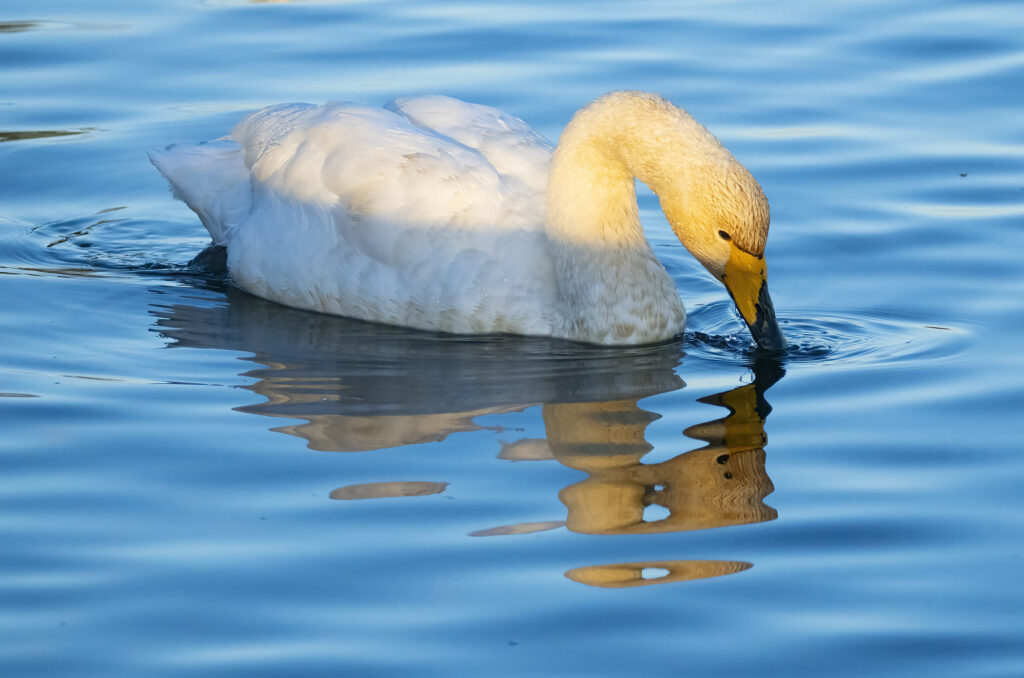
The whooper swan may be a rare breeding bird in the UK, but from October to March, around 16,000 spend the winter here, with the largest concentrations found in East Anglia, Scotland, and Northern Ireland. These birds travel here from their Icelandic and Scandinavian breeding grounds for milder temperatures and plenty of food. Look out for them feeding on crops and grain in fields during the day. In the evening, they will head to open water to roost.
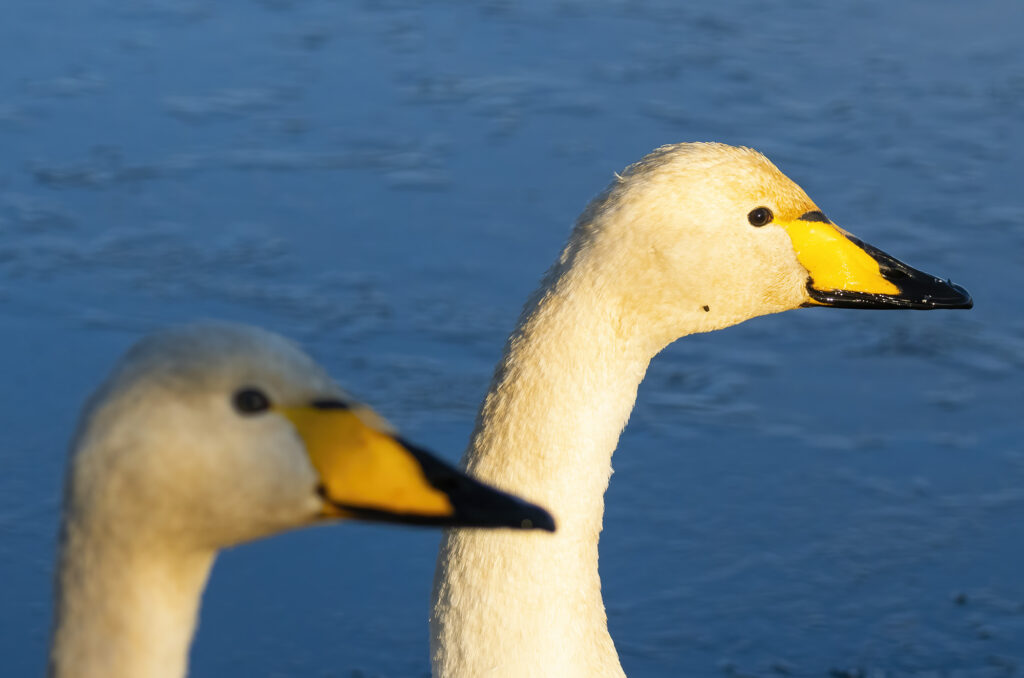
Whooper swans are easy to identify when compared with our resident mute swans. They have a yellow and black bill – in contrast to the mute’s familiar orange – with the yellow forming a pointed v-shape on each side. If you think of this as a wedge of cheese, it can help when distinguishing whooper swans from bewick’s swans, which have less yellow on their bill and lack the pointed wedge shape (wedge of cheese = whooper). Bewick’s swans are also smaller, and you are only likely to see them in East Anglia, the Severn Estuary and Lancashire.
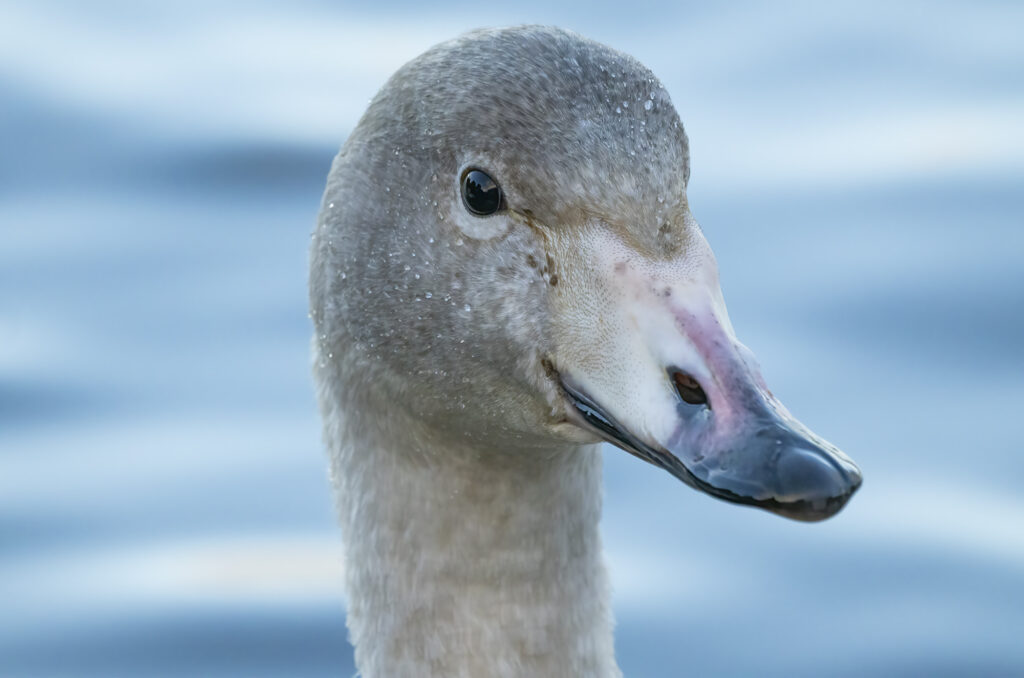
While here, whooper swans provide the perfect opportunity to inject variety into your swan image portfolio. I find that heading to a local urban loch in the late afternoon provides the best encounters. It is also worth visiting nature reserves known for their wintering whoopers, as these will often have hides where you can get great views without disturbing the birds.
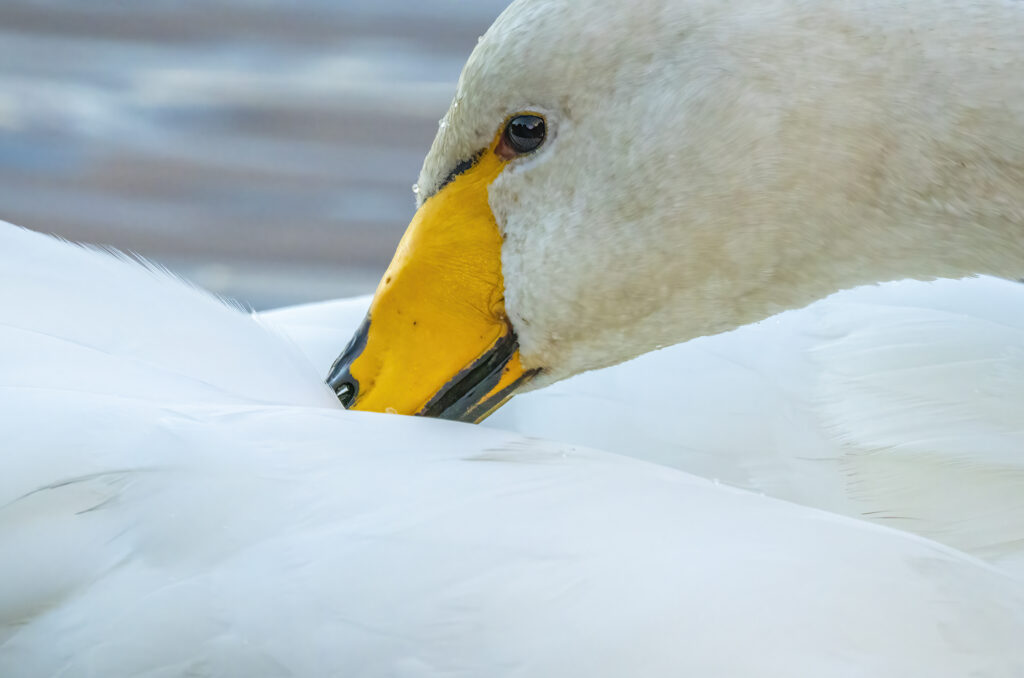
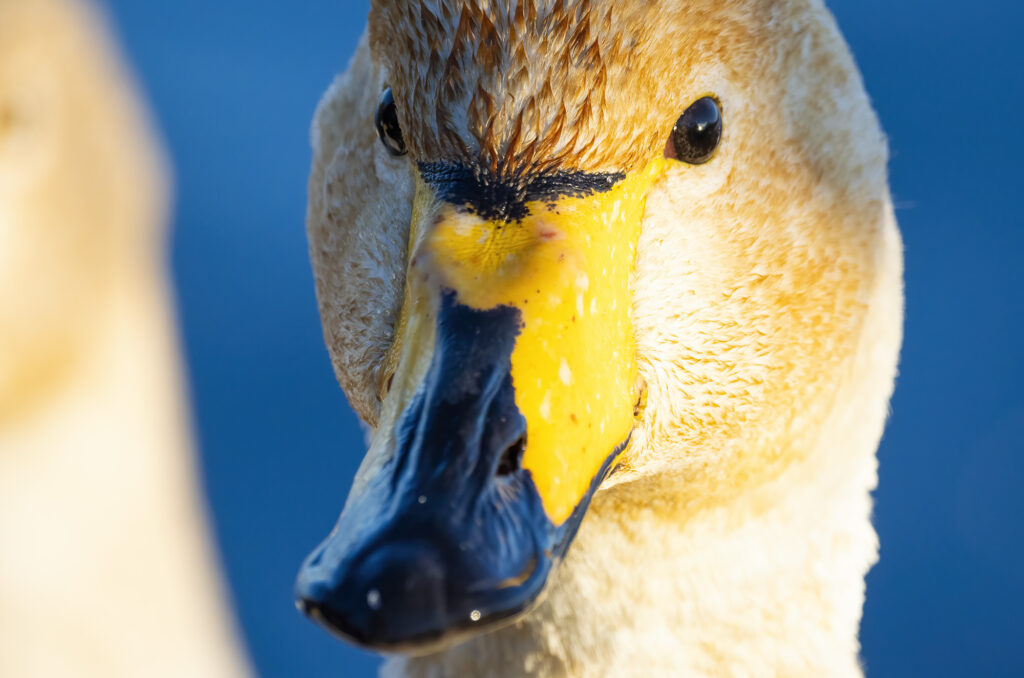
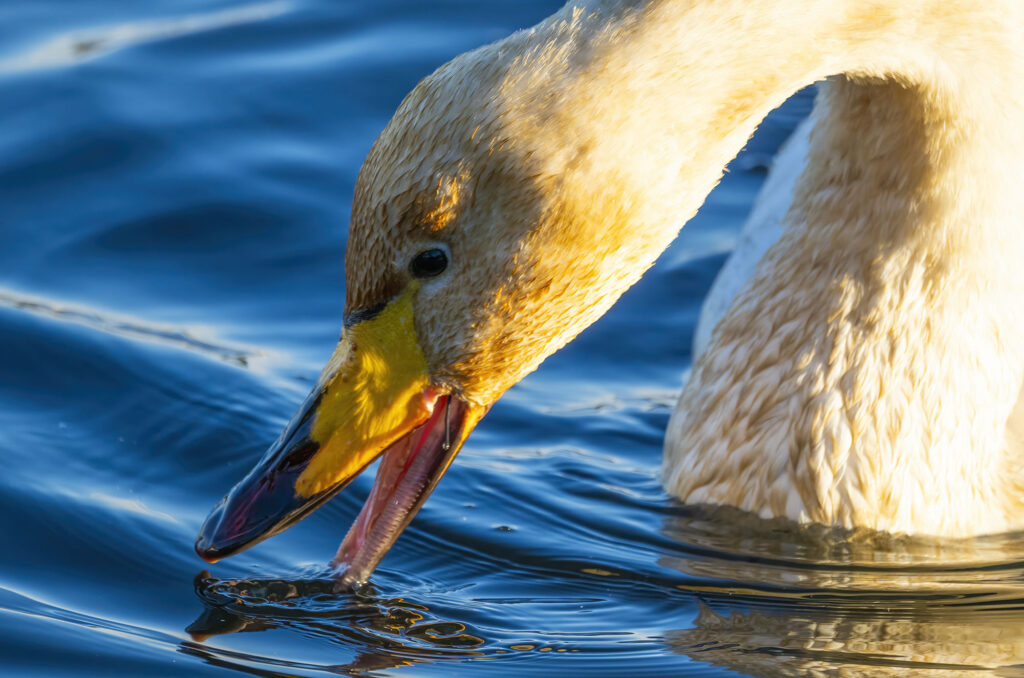
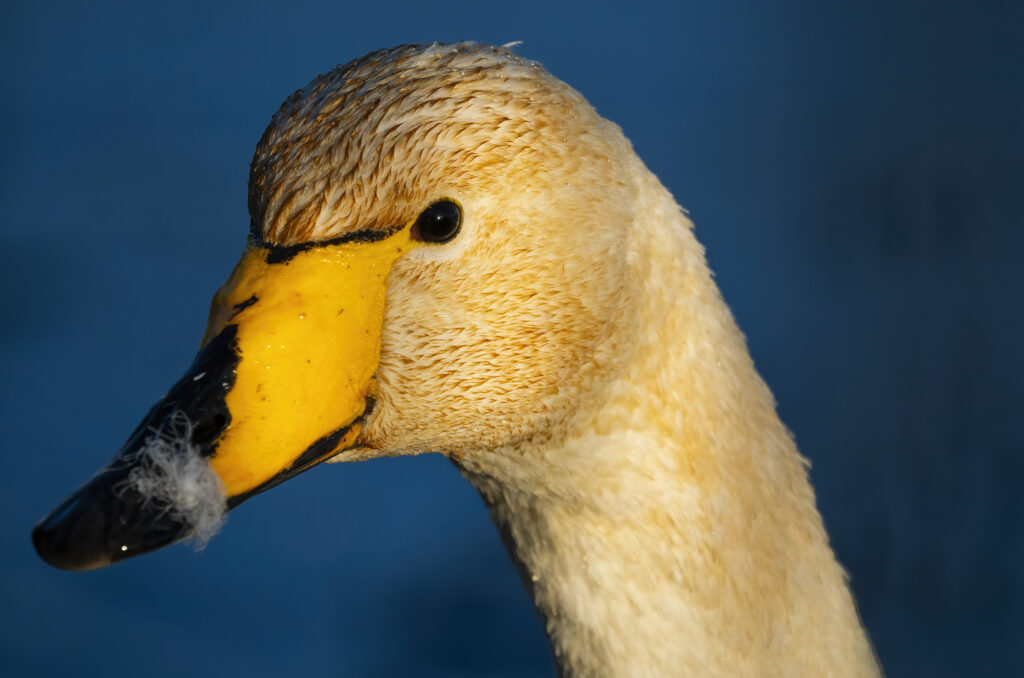
While more hesitant than their bold mute swan cousins, I have witnessed adult and juvenile whooper swans feeding on the scraps thrown in the water by humans alongside the ducks and geese. Look out for individual birds with space around them to capture clean, uncluttered portraits in low winter sunshine. Also, try to capture the moment when a whooper swan opens its bill to make the distinctive bugling call. If you are in the right place at the right time, you may be able to capture a flock coming in to roost – a winter spectacle not to be missed.
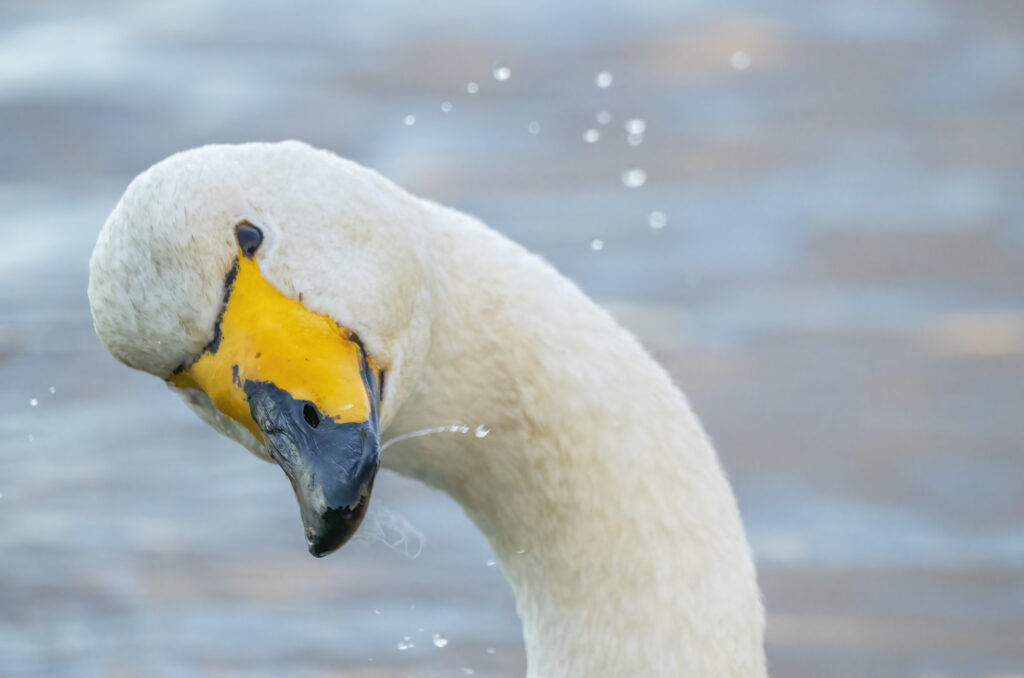
When spring arrives, whooper swans travel non-stop back to their breeding grounds, flying at high altitudes. The delicate appearance of these serene swans belies their resilient nature. They are survivalists who make the perilous journey to our shores seeking sanctuary from the ice and, in doing so, provide us with moments of magic during the darkest days of winter.

